The 4th at Riverfront is featured as one of Renaissance Design Group’s best par 3’s on their web site. My one and only possible contribution to this web site is to further explain and document the hole. My handicap index is in the middle 4’s which colors my observations. Yardages: Blue ….. 175, White …..159, Green …..141, Red …….105. The scorecard it says it is the 16th handicap hole. IMO, No. 4 is not the 16th easiest hole of on the course.
It is the 2nd par 3 on the course that lies between a par 4-1/2 ish hook dogleg right semi “alps” 480 yard 3rd and the 350 yard ish dogleg left (from the white tees) par 4 5th. Access to the 4th tee is gained by bridge crossing over a wetland.
http://

While on the bridge, note the flagstick location as this is the best vantage point. The tee shot is uphill but only enough so to slightly obscure the target making depth perception difficult to gauge (a common theme at Riverfront).
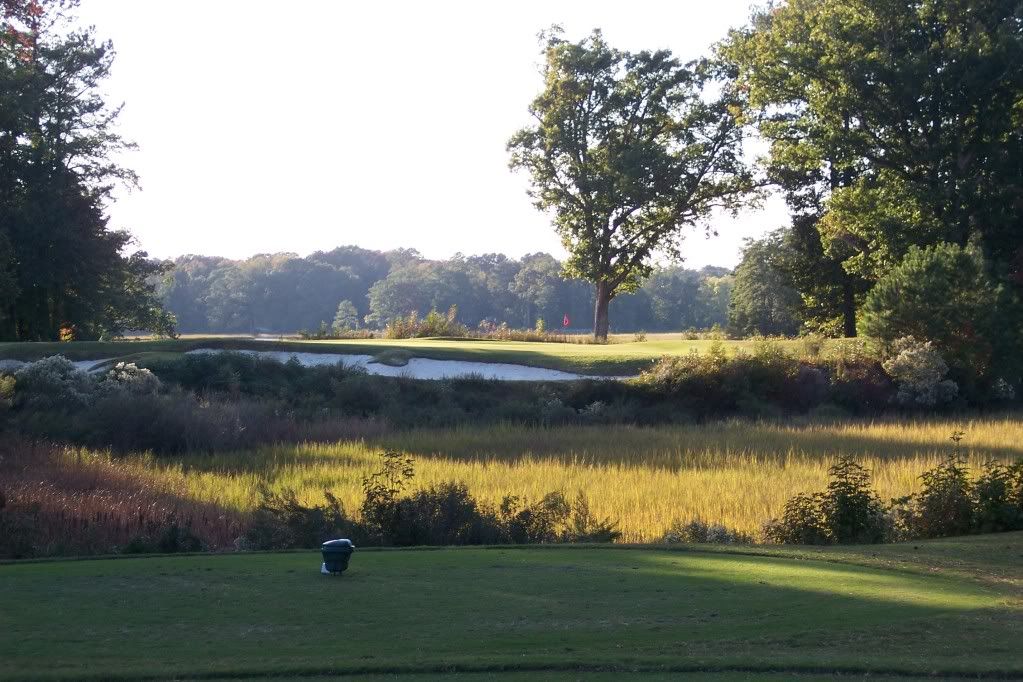
There is a bunker back right which is blind from the tee on line with the freestanding oak tree. Avoid this bunker. In the summer the holes plays generally into the wind on most days.
Strategy is:
1. if the flag is back, do not miss right.
2. if the flag is middle or front, get over the front bunker and stay “below” hole which favors right portion of green.
Thus is the paradox of the hole; pin position effects club selection as well aiming direction. For me, this was not apparent until the 8th or 10th time playing the hole. The contours of the green can only be guessed because tee is the shot is very slightly below the green.
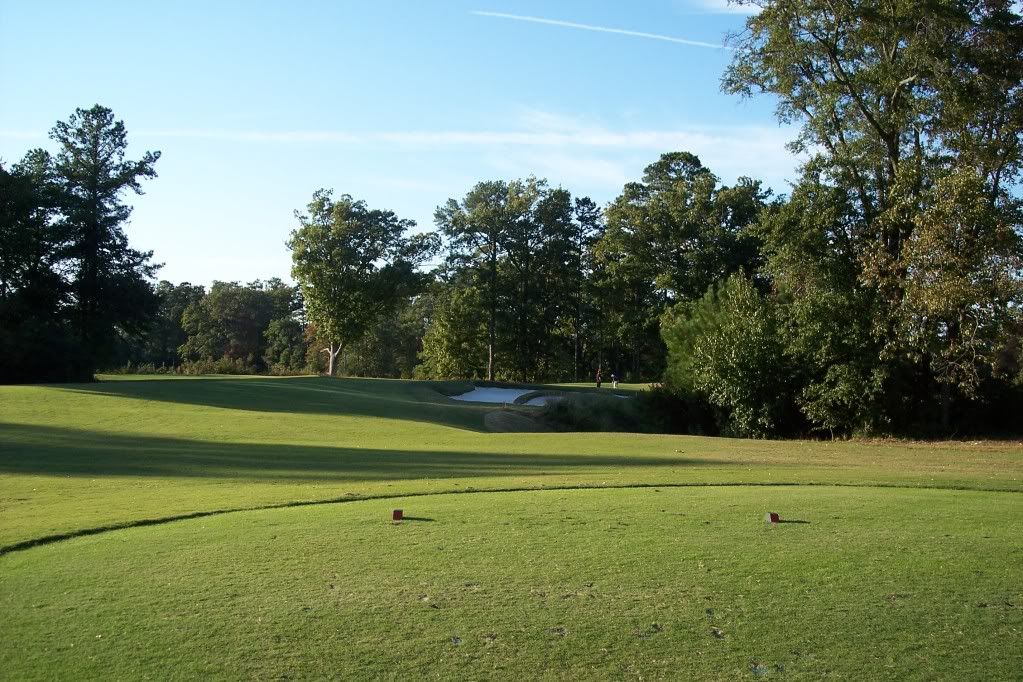
Access to the green is around a grouping of trees & vegetation loosing sight of the green. For an extended period of time, the golfer is left wondering where the tee shot has come to rest. The tee shot from the forward tee is also sort of blind and requires a high quality shot
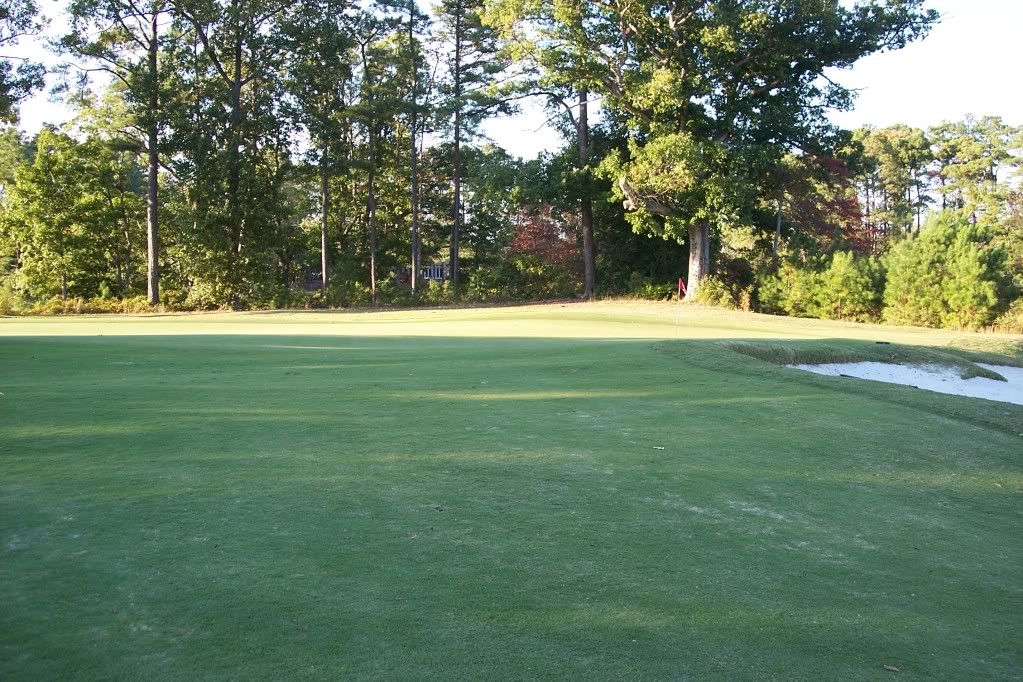
The walk-up approach to the green adds to the suspense, but as you get 20 feet from the green, the quality of the tee shot is finally revealed. Putting is very much easier if your ball is below the hole and on the same side of the sloping crown.
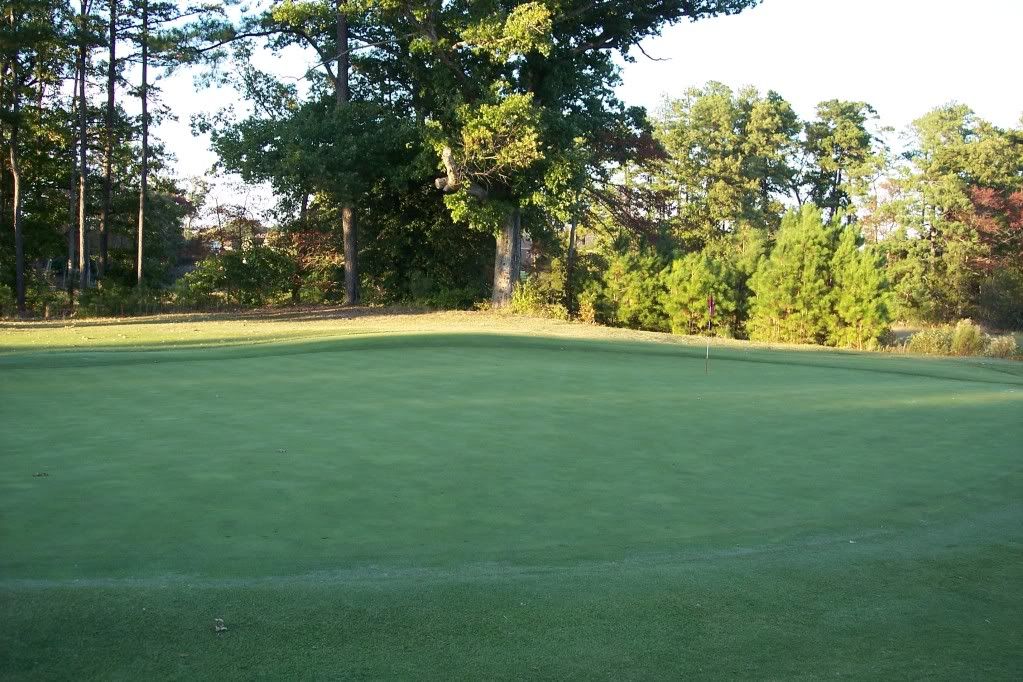
This is bunker blind from the tee.
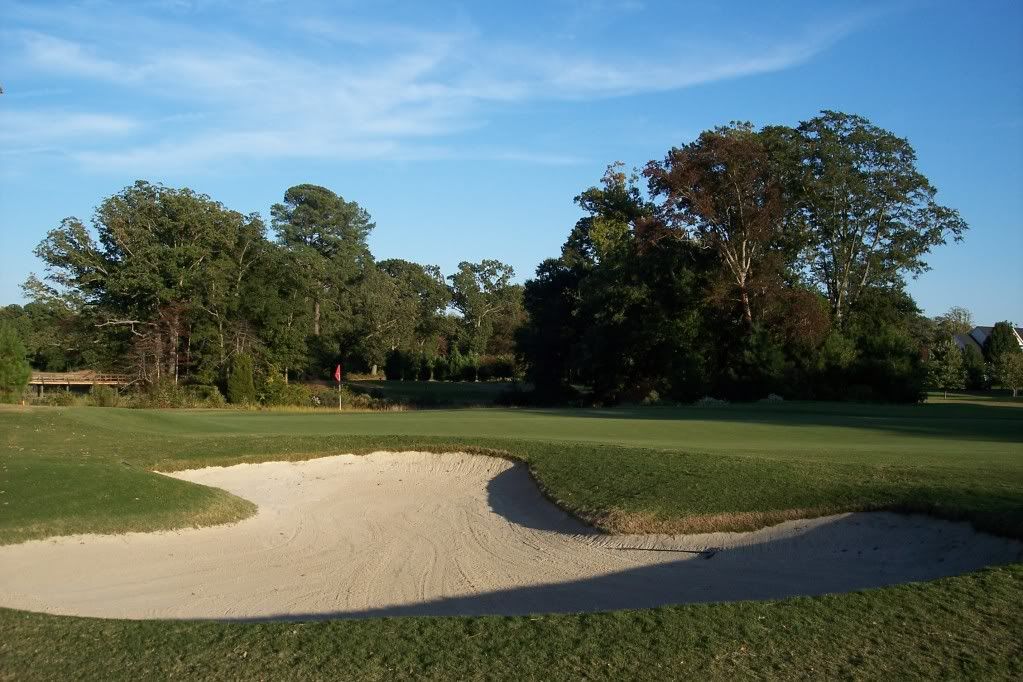
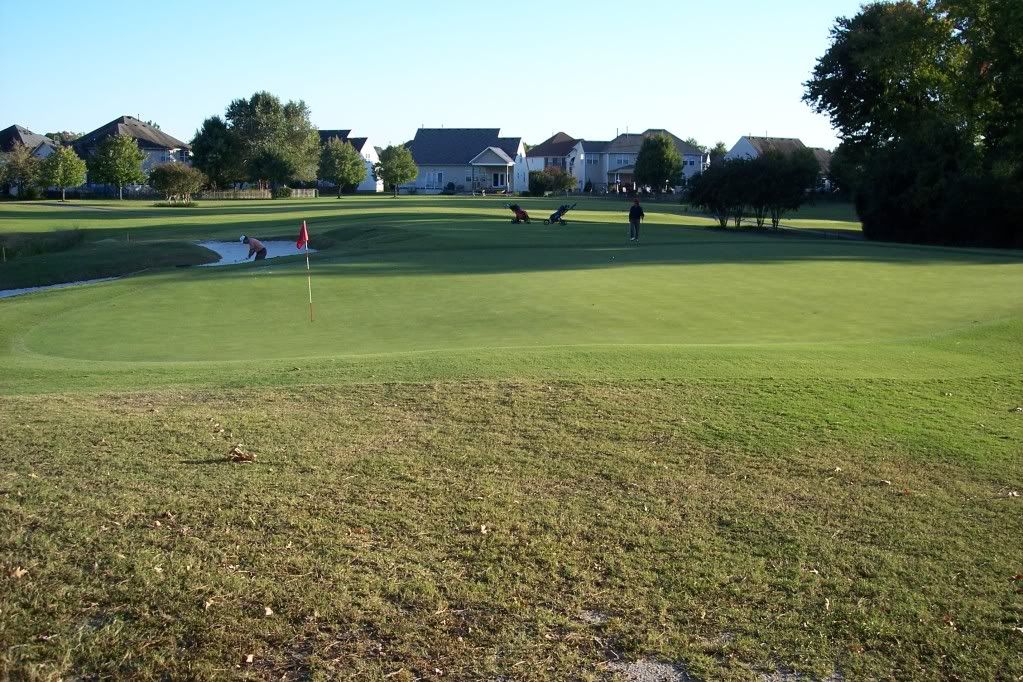
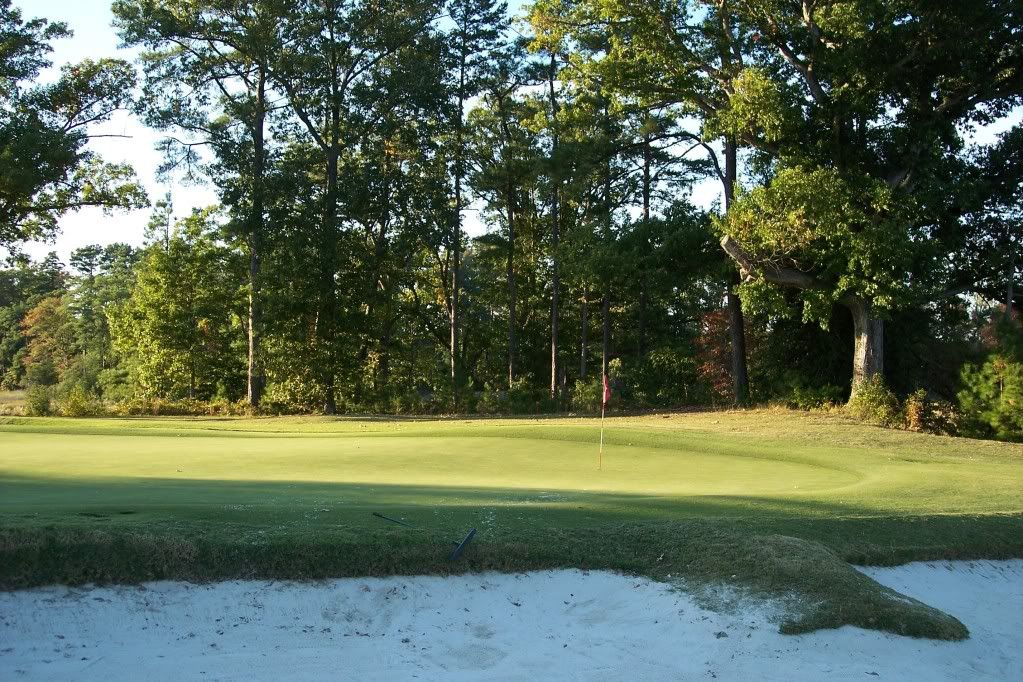
The greens at Riverfront are not easy to describe, which is why I took a bunch of overall measurements and include a drawing with some descriptions. The shape of this green is a generally like a subtle curved trapezoid-parallelogram. The most salient feature is a curvilinear sloping crown starting back left moving toward the front right. Turned up edges create counter slopes toward this crown.
No level putts exist here and a myriad of breaking putts exist from everywhere. The front right is a mini punchbowl.
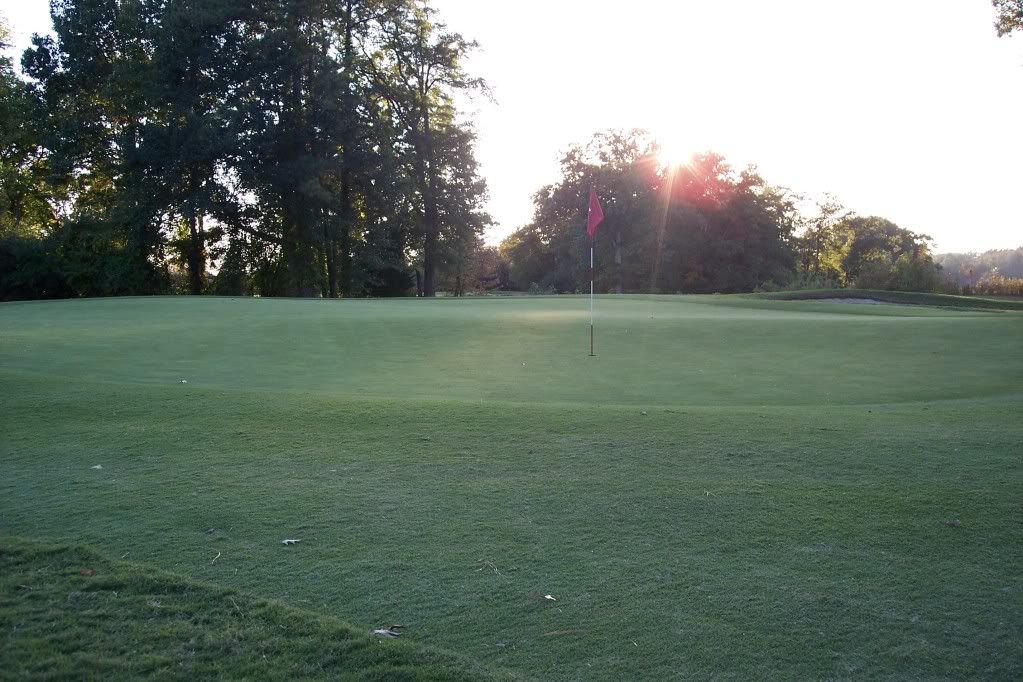
One other observation about this hole and many others at Riverfront … missing greens.
If the pin is located front or middle, missing short right leaves an easier chip shot than a long putt down, across and/or over the sloping crown. If the pin is back, missing slightly long leaves an easier chip than a long putt from the front of the green up & over the diagonally positioned ridge.
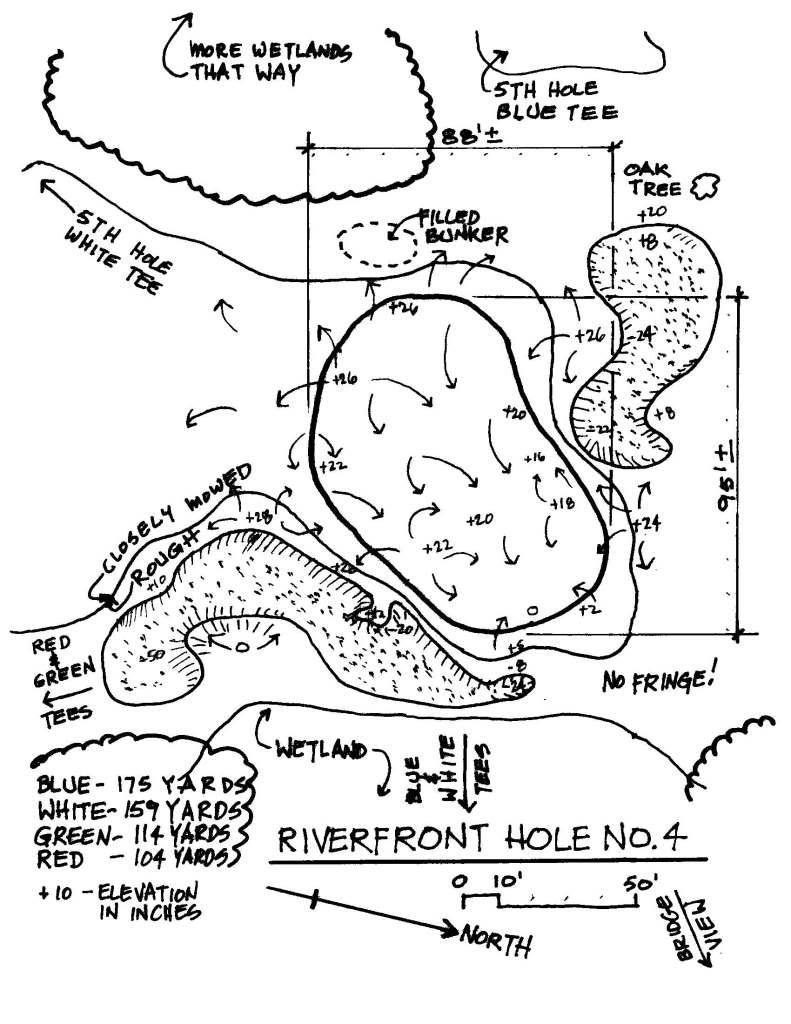
When to play??? Springtime is dicey, weather and course conditioning wise.
The best time of year to play Riverfront is from September 20 to November 1. In that time of year, the weather is cooler and dryer and the greens firmer. The super, Mr. Andy Woolston, there from the beginning, is then able to buzz the greens down a bit and all of the green slopes play to their fullest. Friday’s are often busy with outings, call ahead. Most of the pictures posted here were taken in late October and into November.